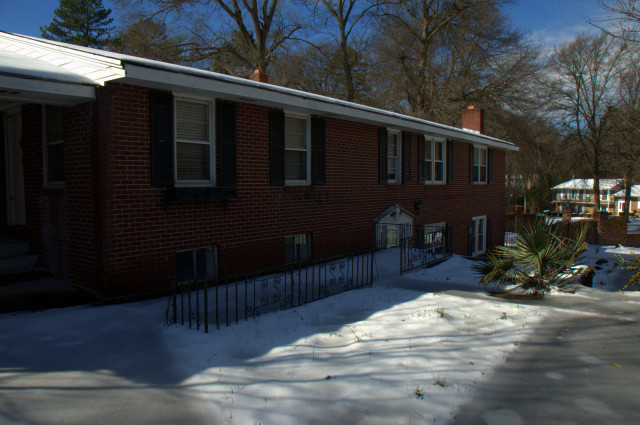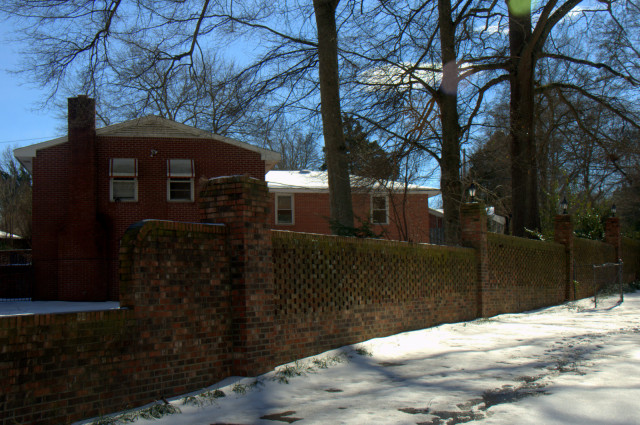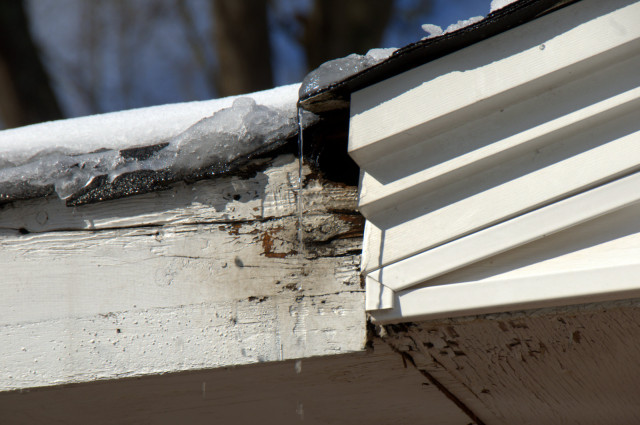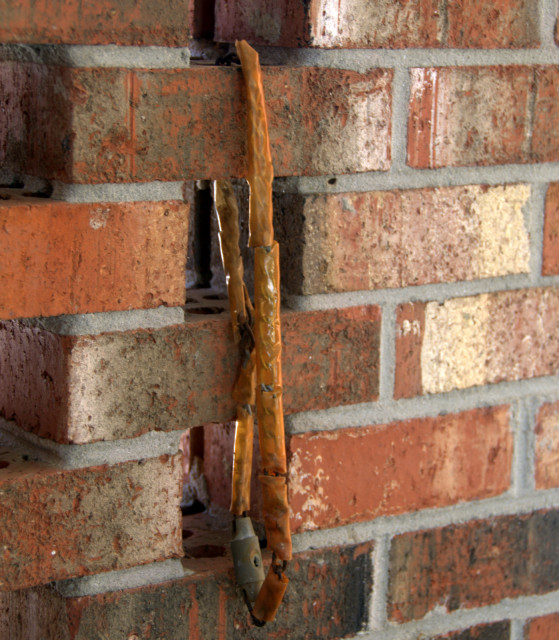Nothing about the house makes sense, but it’s obvious it was once the best house on the block. Or at least it wanted to be. In the days before McMansions, this must have been something of an intermediate step. But a strange one.
The addition at the back of the house is almost as big as the house itself, but there seems to be little living space in it: the top floor is one enormous room with a wall of glass that overlooks the swimming pool; the first floor is a series of garages.
But what’s more impressive than the garages is the brick wall and cement pads around the entire property. A double-course wall complete with lights, it must have cost well over several thousand dollars when it was made decades ago. And there is no backyard: it’s all been cemented — another several-thousand-dollar project.
It just doesn’t add up: You’d expect to peek over a wall like this and see some great mansion, something Chateau-like. Instead, it’s just a typical suburban brick home from the seventies, a home with a large addition but no central air as evidenced by the multiple window-unit air conditioners.
According to the realtor sign that has been in the front yard for years, it’s now under contract. K and I walked during the snow break last week, discussing much of the ideas above.
“It’s in such bad shape, though,” she sad, looking at the rotting wood and the remnants of previous owners.
Perhaps the house is worth it, despite its dire repair, just because of the brick work.



